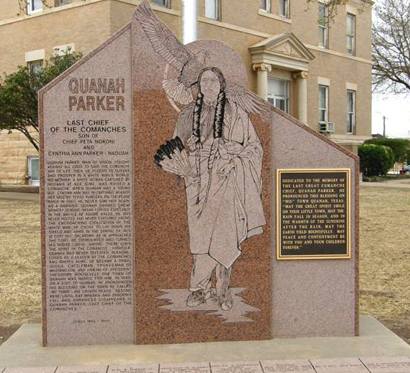Hardeman County courthouse, Quanah, Texas. (original) (raw)
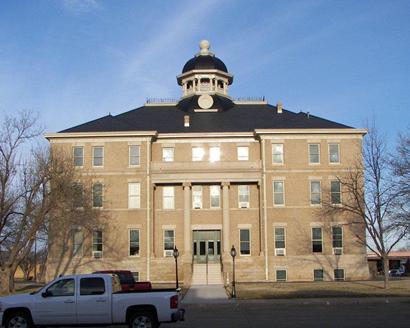
The Present Hardeman County Courthouse
Date - 1908
Architect - R. H. Stuckey
Style - Beaux-Arts
Material - Brick
Texas Historical Landmark
The stately 1908 Courthouse reflects the pride felt by Hardemaners when they moved the County Seat from Margaret. Residence for voting was determined by where one had one's laundry done. It was a clean election.
The Hardeman County courthouse received an exterior restoration which was completed in 2011. An interior restoration grant was awarded to Hardeman County in 2012.
Hardeman County Courthouse Historical Marker
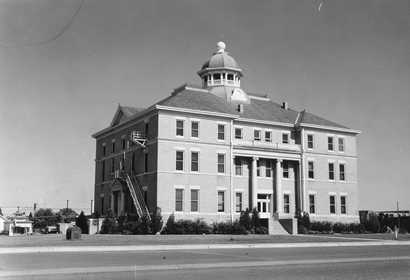
Hardeman County Courthouse as it appeared in 1939
Photo courtesy TXDoT
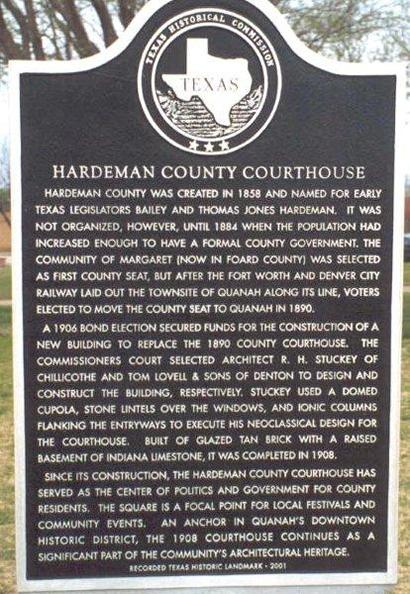
Hardeman County Courthouse historical marker
Photo courtesy Terry Jeanson, April 2006
Historical Marker:
Hardeman County Courthouse
Hardeman County was created in 1858 and named for early Texas legislators Bailey and Thomas Jones Hardeman. It was not organized, however, until 1884 when the population had increased enough to have a formal county government. The community of Margaret (now in Foard County) was selected as first county seat, but after the Fort Worth and Denver City Railway laid out the townsite of Quanah along its line, voters elected to move the county seat to Quanah in 1890.
A 1906 bond election secured funds for the construction of a new building to replace the 1890 county courthouse. The Commissioners Court selected architect R. H. Stuckey of Chillicothe and Tom Lovell & Sons of Denton to design and construct the building, respectively. Stuckey used a domed cupola, stone lintels over the windows, and ionic columns flanking the entryways to execute his Neoclassical design for the courthouse. Built of glazed tan brick with a raised basement of Indiana limestone, it was completed in 1908.
Since its construction, the Hardeman County Courthouse has served as the center of politics and government for county residents. The square is a focal point for local festivals and community events. An anchor in Quanah's downtown historic district, the 1908 courthouse continues as a significant part of the community's architectural heritage.
Recorder Texas Historical Landmark - 2001

The courthouse from the northeast corner
Terry Jeanson, March 2012
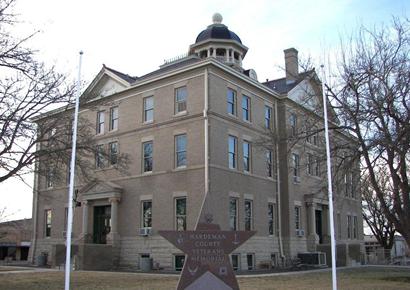
The courthouse from the northwest corner.
Terry Jeanson, March 2012
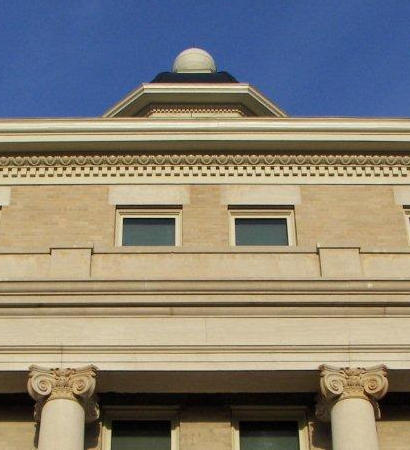
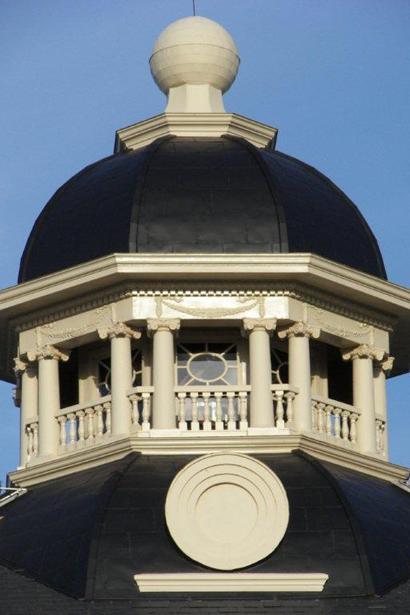

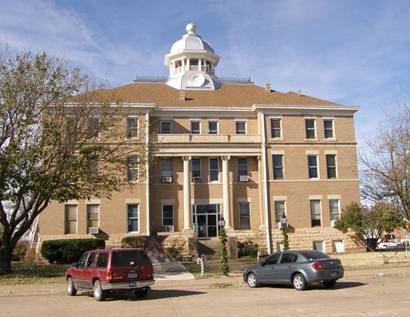
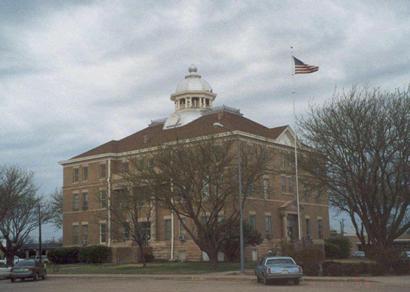
"The front of the 1908 Hardeman County courthouse. The rear of the courthouse does not have an inset portico like the front."
- Terry Jeanson, April 2006 photo
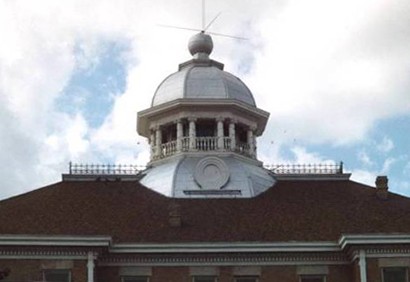
Hardeman County Courthouse dome
Photo courtesy Barclay Gibson, October 2002
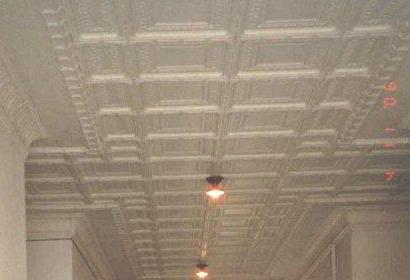
"Although there have been modern renovations to the interior, the main floor still retains its metal-pressed ceiling."
- Terry Jeanson, April 2006 photo
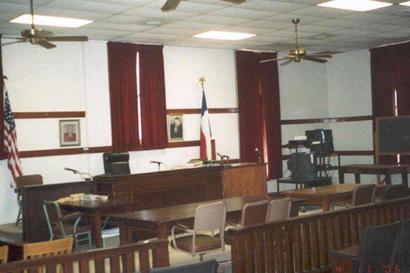
Hardeman County Courthouse district courtroom
Photo courtesy Terry Jeanson, April 2006
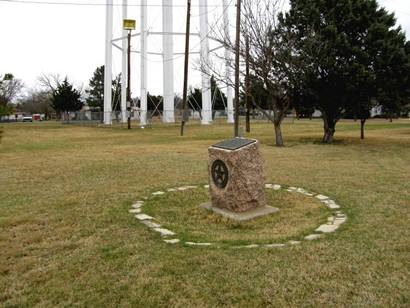
1936 Hardeman County Centennial Marker located in a park on the western edge of Quanah.
Photo courtesy Barclay Gibson, April 2009
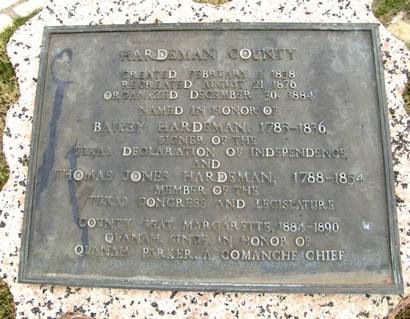
Centennial Marker
Hardeman County
Created February 1, 1858, recreated August 21, 1876. Organized December 30, 1884. Named in honor of Bailey Hardeman, 1785-1836, signer of the Texas Congress and Legislature. County seat, Margarette, 1884-1890; Quanah, since, in honor of Quahah Parker, a Comanche Chief.
Quanah Parker Monument
On the Courthouse Square, dedicated in 1991, this tells the story of Indian captive, Cynthia Parker, her recapture and subsequent death, and her son who became the last great Comanche Chief. One of the most interesting stories in a state known for interesting stories.
